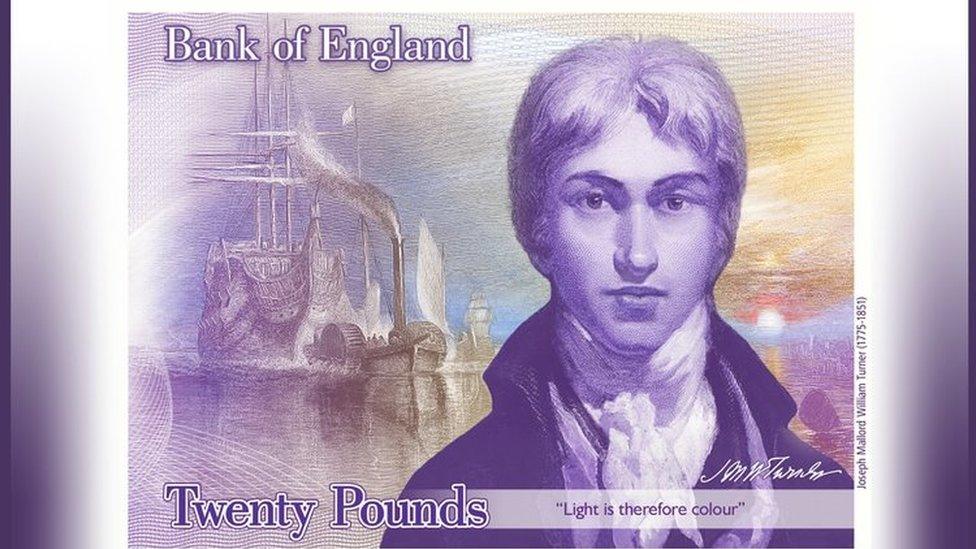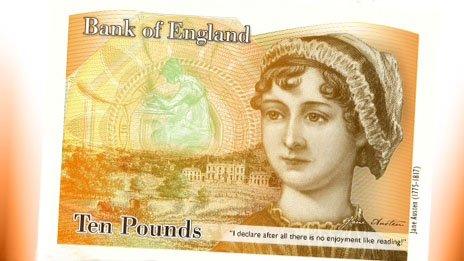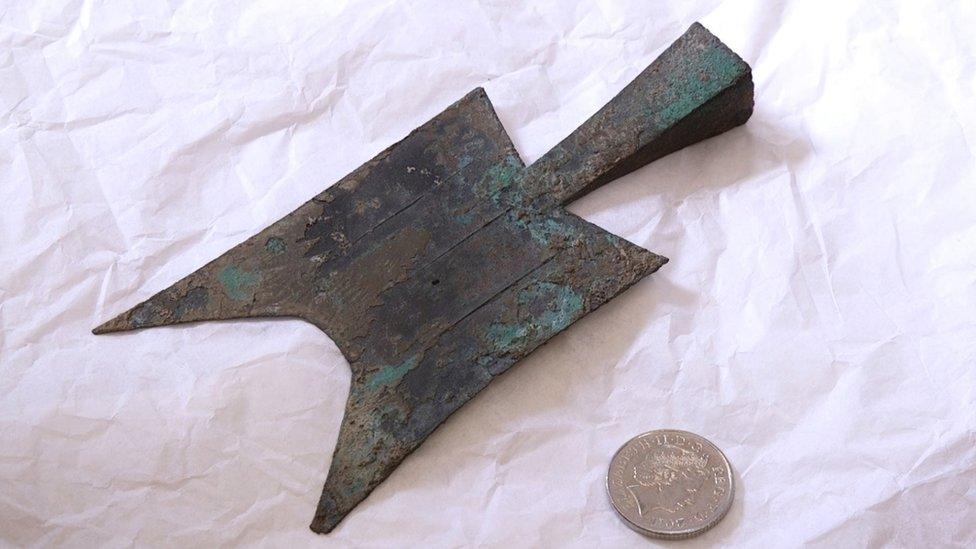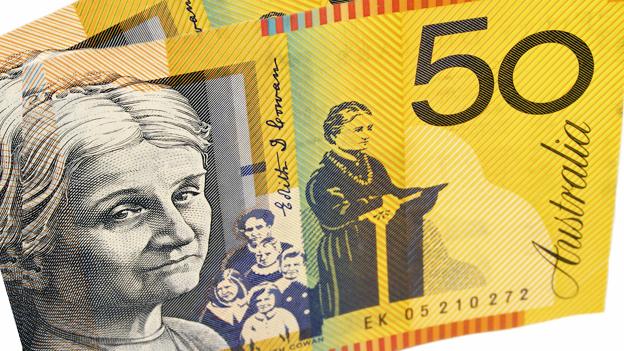New Sir Winston Churchill £5 note design is unveiled
- Published
Five facts about the new Winston Churchill fiver
The final design for the new Bank of England £5 note entering circulation on 13 September has been revealed.
The note will feature the image of Sir Winston Churchill and will be made of plastic rather than cotton paper.
The Bank says the thin and flexible plastic banknotes will be cleaner, more durable - as they will last for five years - and harder to counterfeit than the current paper notes.
It admits that they may initially be prone to sticking together.
The use of thin, see-through polymer is a first for the Bank of England, which invested £70m in the project. Plastic banknotes are already in use in Scotland as well as other countries including Australia and Canada. They have also been used in Northern Ireland.
At an event at Churchill's birthplace of Blenheim Palace in Oxfordshire, the Bank is also releasing advice to businesses about dealing with the new polymer notes, which are 15% smaller than the current notes.
Brendan Doyle, of CMS Payments Intelligence, said: "Retailers and banks are going to have to invest over £200m to change ATMs, self-service checkouts and other equipment."
Churchill

The banknotes are already being printed ready for September
The decision to feature Churchill on the new banknote was made three years ago.
Bank governor Mark Carney said: "Our banknotes are repositories of the United Kingdom's collective memory and like Churchill, our new polymer notes will stand the test of time."
The new design includes a see-through plastic window featuring the Queen's portrait. The new notes will also feature holograms - such as one showing the maze at Blenheim Palace - and micro-lettering beneath the Queen's portrait with letters and numbers that are visible under a microscope.
Various elements such as size and colours are aimed to assist people who are visually impaired.
The artwork on the banknote will also include:
Churchill's declaration "I have nothing to offer but blood, toil, tears and sweat", which came in a speech in the Commons on 13 May 1940
A view of Westminster and the Elizabeth Tower from the South Bank in gold foil on the front of the note and silver on the back
The Great Clock showing three o'clock - the approximate time of the Commons speech
A background image of the Nobel Prize for literature, which Churchill was awarded in 1953
The image of Churchill has featured on currency before. He was the first commoner to be shown on a British coin when he appeared on the 1965 crown, or five shilling piece.
Banknote characters
Plastic v paper fivers: Which will survive the washing machine test?
There are more than 329 million £5 notes in circulation, so it will take a year for the Churchill note to fully replace the current one featuring the social reformer, Elizabeth Fry.
She is the only woman, apart from the Queen, currently appearing on Bank of England notes, although Jane Austen will feature on the new £10 note issued next year.
The new £10 and £20 notes will also be printed on polymer. The Bank recently announced that artist JMW Turner will appear on the next £20 banknote, expected to enter circulation by 2020.
New polymer banknotes are also being issued in Scotland, although those issued by Clydesdale Bank are already in circulation.
The Bank of Scotland - one of the banking note issuing institutions in Scotland - announced on Thursday that its own polymer £5 banknote will be available in branches from 4 October.
The note is slightly smaller than the existing paper £5 notes in circulation, and the same as the Bank of England fiver.
It reuses the existing Bank of Scotland £5 design, with the front retaining the portrait of Sir Walter Scott and the reverse featuring the Mound in Edinburgh.
Notes are redesigned on a relatively frequent basis, in order to maintain security and prevent forgeries.
- Published22 April 2016

- Published24 July 2013

- Published22 April 2016

- Published13 April 2015
